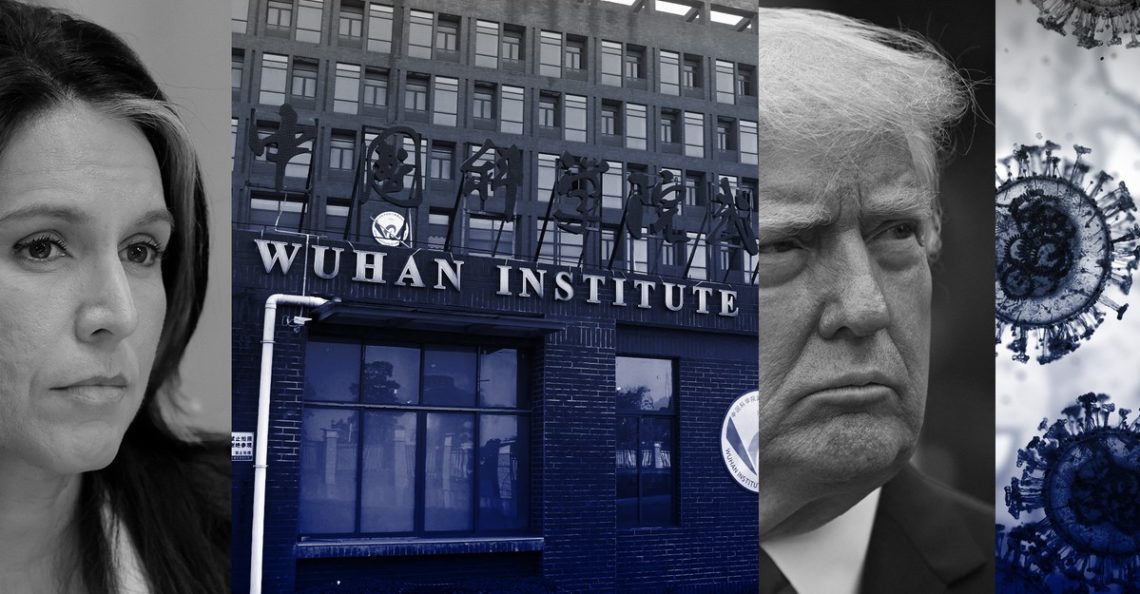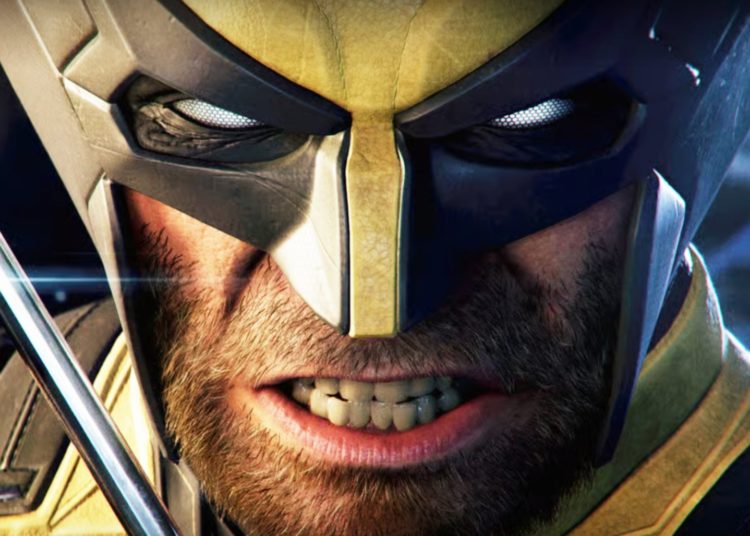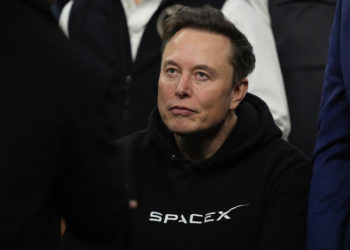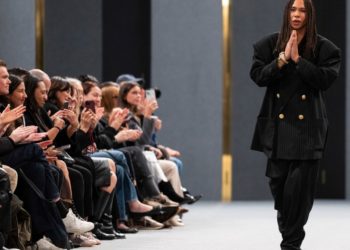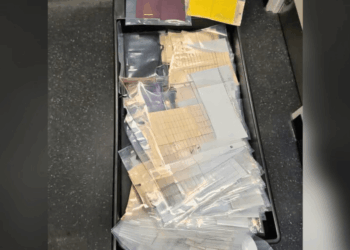The lab-leak theory of COVID-19’s origins comes in many forms. Here is Donald Trump’s: A scientist in Wuhan walked outside to have lunch, maybe with a girlfriend or something. “That’s how it leaked out in my opinion, and I’ve never changed that opinion,” the president said earlier this month at a press event. Whether something like this really happened was, until this year, a subject of lively debate. These days, it’s being presented as official history. Yes, COVID did come out of a Chinese lab, White House Press Secretary Karoline Leavitt told reporters shortly after Trump’s inauguration. “We now know that to be the confirmable truth.”
Of course, we don’t really know that, and they don’t know it either. Director of National Intelligence Tulsi Gabbard, who has convened yet another lab-leak investigation at Trump’s behest (after many other intelligence assessments led to split results), could only dance around the matter in an interview with Megyn Kelly earlier this month. Has some new and final proof been found? Kelly asked. Gabbard responded: “We are working on that with Jay Bhattacharya,” the director of the National Institutes of Health, “and look forward to being able to share that hopefully very soon.” (Gabbard’s office did not reply to a request for comment.)
Any hedging on the matter of pandemic origins represents a standard view among the experts: We simply aren’t sure. In reporting on this question for the past few years, I’ve spoken with some scientists and pandemic-origins investigators who are confident the coronavirus came out of a Wuhan lab, and with some who say they’re nearly certain that the virus spread to humans from a market stall. I’ve also heard from many others whose appraisals of the odds fall somewhere in between. Their only common ground may be the single plain acknowledgment that the evidence we have is incomplete.
But, despite the well-established data gaps—and in willful disregard of them—the lab-leak theory has become a MAGA theorem. Adherence to it is now a central tenet of the Trump administration: a shibboleth for loyalists, an animating grievance, and, in recent weeks, a stated rationale for punitive reforms. Earlier this month, when the White House proposed an $18 billion cut to the nation’s budget for biomedical research, the lab-leak theory—described as “now confirmed”—was given as a pretext.
There are many reasons to regret this shift toward artificial certainty, starting with the fact that whatever nuance now attached to the topic of pandemic origins has been hard-won. For much of 2020, a different bullheadedness prevailed: Invocations of the lab-leak theory were often tarred as right-wing propaganda, or even racist lies. At the start of Joe Biden’s presidency, “there was a clear and almost overwhelming leaning towards natural origin,” David Relman, a Stanford microbiologist and former member of the National Science Advisory Board for Biosecurity who has long maintained that a laboratory origin is more likely, told me. This bias weakened over time, as the theory came to have more distance from the Trump administration, and more suggestive bits of circumstantial evidence accrued. In the spring of 2023, the COVID-19 Origin Act, which demanded the declassification of all lab-leak-related intelligence, passed without a wisp of opposition, and in 2024, Relman himself was detailed to the White House as a senior adviser working on pandemic preparedness. “There was a palpable shift to the middle,” he said.
But this equanimity has proved to be short-lived. According to the new administration and its supporters, the laboratory origin is presumptively correct. On covid.gov, which until last month offered only basic patient information (“If you test positive for COVID-19, talk to a doctor as soon as possible”), LAB LEAK now appears in jumbo font across the top—with Trump himself emerging from the gap between the B and L, as if he’d just leaked out himself. “The true origins of COVID-19,” the government website says, beside his foot.
Declaring fealty to this point of view has now become a sacred rite within the GOP, not unlike endorsement of the claim that the 2020 election was a fraud. Plenty of Trump’s most senior appointees have averred that COVID started in a lab. Secretary of Homeland Security Kristi Noem described it as “the truth.” FDA Commissioner Marty Makary has claimed that a laboratory origin is a “no-brainer,” and described it falsely as “now the leading theory among scientists.” Bhattacharya said at an NIH town hall on Monday that he believes the coronavirus was released from a lab, and that it derived from U.S.-funded research. The DHS, FDA, and NIH did not reply to requests for comment.
Health and Human Services Secretary Robert F. Kennedy Jr. has staked out the most extreme position of the bunch, publicly declaring that “SARS CoV-2 is certainly the product of bioweapons research.” As of January, the entire U.S. intelligence community disagreed with this assessment. In an email, an HHS spokesperson told me that Americans “will no longer accept silence, censorship, or scientific groupthink” and “deserve the truth.”
In the background, too, the administration has looked to bring other hard-liners on the lab-leak theory into the fold. Robert Kadlec, for instance, has been nominated for a role at the Department of Defense. A veteran of the first Trump administration who was instrumental in the management of Operation Warp Speed, he is also the author of a report that argues SARS-CoV-2 might have been developed by the Chinese military as a bioweapon that could lower American IQs by fogging up our brains with long COVID. (Kadlec told me that he doesn’t think COVID would be a major part of his portfolio, if he were confirmed—but “it will have relevance with the biosurveillance work that may be done,” he said.)
A former senior scientist at NIH told me about two others whose potential roles in government have not previously been reported. The first is Alina Chan, a molecular biologist at the Broad Institute of MIT and Harvard, the author of Viral: The Search for the Origin of COVID-19, and a dogged advocate for more vigorous investigations of the lab-leak theory and tighter restrictions on virology research. Chan confirmed to me that she is in discussions for a role at the NIH. “I haven’t committed to anything,” she told me, “but I do feel like now that we’ve reached this point, I feel that this is probably the most important thing that I should be doing in my life—doing as much as I can to help the U.S. government prevent future catastrophic lab leaks.”
The former NIH scientist, who requested anonymity in order to preserve professional relationships, also said a contract was under consideration for Bryce Nickels, a Rutgers geneticist and Bhattacharya’s friend and former podcast co-host. Nickels has been notably aggressive on the lab-leak theory, and as an advocate for better oversight of research that could lead to the production of more dangerous pathogens. In his posts on social media, Nickels has called Anthony Fauci a “monster” and maintained that the U.S. is in the business of developing “bioweapon agents.” (Nickels did not reply to questions for this article.)
In principle, the arrival of this lab-leak coterie in Washington could have marked a useful shift in the study of pandemic origins. If the old guard in public health was at times inclined to paper over uncomfortable debates, this new one might be zealously transparent. Chan, for instance, told me that she’d like to see investigators take a closer look at documents and correspondence from EcoHealth Alliance, the NIH-funded nonprofit that was working with the Wuhan Institute of Virology, and spend more effort trying to nail down the very first cases of disease in China. She also thinks the government should release more details of the intelligence community’s assessments, which might explain why different agencies and offices have come to different answers as to what is most likely to have occurred. (The FBI, CIA, and Department of Energy lean toward a laboratory accident of some kind. Five others, including the National Intelligence Council and the Defense Intelligence Agency, are inclined the other way.)
But this administration seems unlikely to make much progress on this front. If anything, its policies and proclamations have only made the subject more intractable. Even before Trump took office, many scientists were reluctant to engage with the topic, for fear of being drawn into what has been a very public and vituperative debate. Now that worry must be multiplied a hundred times. In recent months, the NIH has terminated grants that run afoul of the government’s positions on diversity and gender, and shut off funding to entire research universities. It will soon end the system that U.S. researchers use to share grant funding with foreign collaborators, and has begun suspending collaborations overseas. The risks of stepping out of line have never been so salient.
In the meantime, new government restrictions inspired by the lab-leak theory could serve to make it even harder to fill in the remaining details of what happened in Wuhan. Michael Worobey, an evolutionary biologist at the University of Arizona who has published a string of papers laying out an aggressive case for the market origin, told me that he’d like to see more sampled DNA from wild populations of civets, raccoon dogs, and bamboo rats throughout China. But this sort of work would require close collaboration with Chinese researchers, at just the time when those collaborations are being scrutinized or canceled.
“The administration is developing a very adversarial relationship with the scientific and technical communities,” Filippa Lentzos, a biosecurity researcher and professor at King’s College London, told me. “It’s not a facts-based discussion. There are facts from one side, but not from the other side.” This climate will tend to undermine the work of encouraging more prudence in the labs of those who study risky pathogens, she said. As for the COVID-origins debate itself, she does not expect a satisfying answer. “I think it’s kind of a lost cause.”
Either way, by tying budget cuts and other new restrictions to the lab-leak theory, the administration seems intent on punishing an enormous swath of biomedical researchers for the actions of the tiny handful whose work could even theoretically be tied to the pandemic. “This is the most enormous case of baby and bathwater that I have ever seen,” Relman told me. “The baby is just being shoved down the drain.”
The post Trump Thinks He Knows What Started the Pandemic appeared first on The Atlantic.
